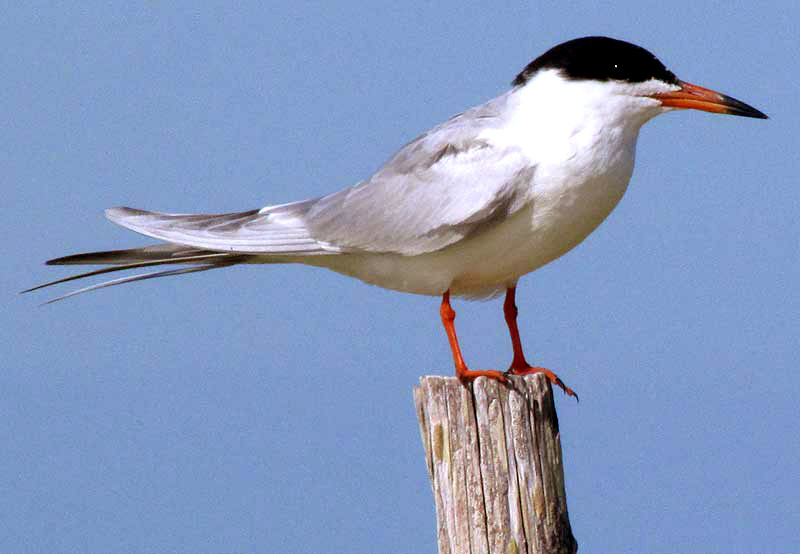Excerpts from Jim Conrad's
Naturalist Newsletter

from the February 15, 2015 Newsletter issued from Río Lagartos, on the north-central coast of Yucatán, MÉXICO
FORSTER'S TERN
We're used to seeing dozens of Common Terns gathered thickly on mud bars barely emerging from the estuary's salty water, but that day there seemed to be terns of two kinds there, some paler than others. Studying them closer, other subtle, hard-to-put-into-words features could be recognized. It looked like we had two mingling tern species, but who was the newcomer? One on a post rising from the water was in its summer plumage, shown above.
Looking at distribution maps, and disqualifying all species these new birds could not be because of their field marks, soon it was clear that either the mystery birds were Roseate or Forster's Terns. In the end we just had to show the pictures to Diego, who assured us that they were Forster's Terns, STERNA FORSTERI. He pointed out that the Forster's Tern's legs are longer than those of other species, something the field guides don't mention. However, when pictures are compared on the Internet, this generalization turns out to be a good field mark. Also there are other subtler differences, such as the Forster's' paler primary feathers. Flying, the Forster's more deeply forked tail is distinctive, but that's hard to judge here.
Forster's Terns are winter visitors along the Yucatan coast, as they are the entire Gulf of Mexico Coast. They nest in south-central Canada and a bit of the north-central US. The vast majority of Forster's Terns on the mud flat that day were in juvenile plumage, but the one on the post in our picture, here in February, was in breeding plumage, and I don't know why. Forster's adults in winter normally have white head crowns.